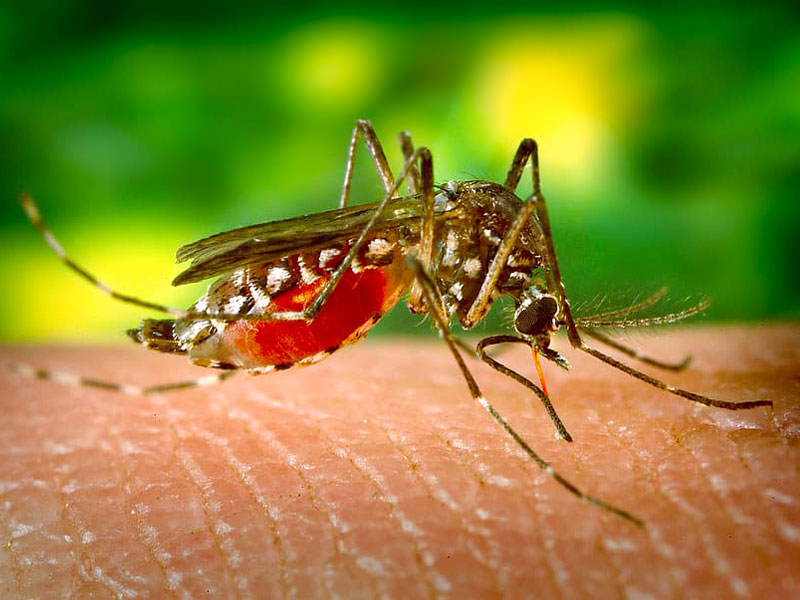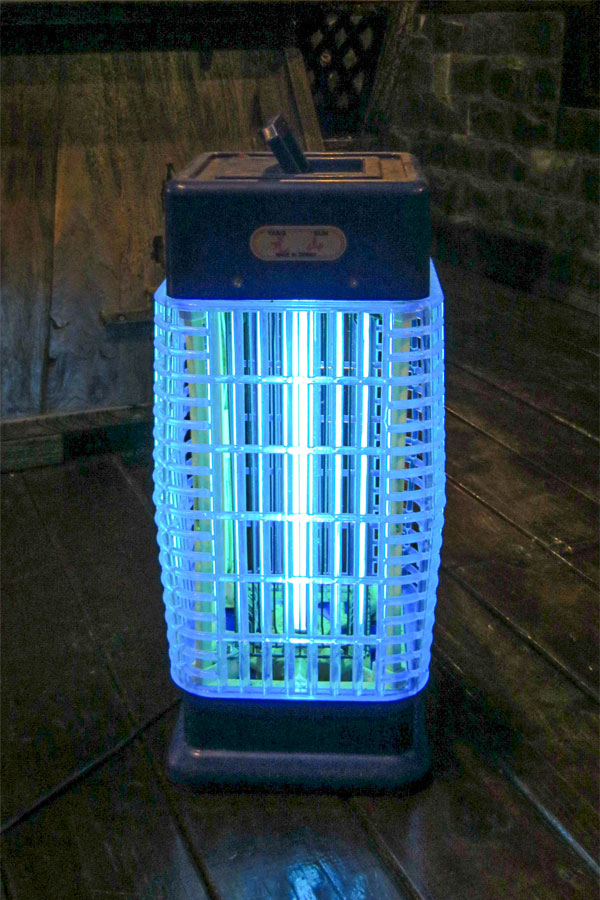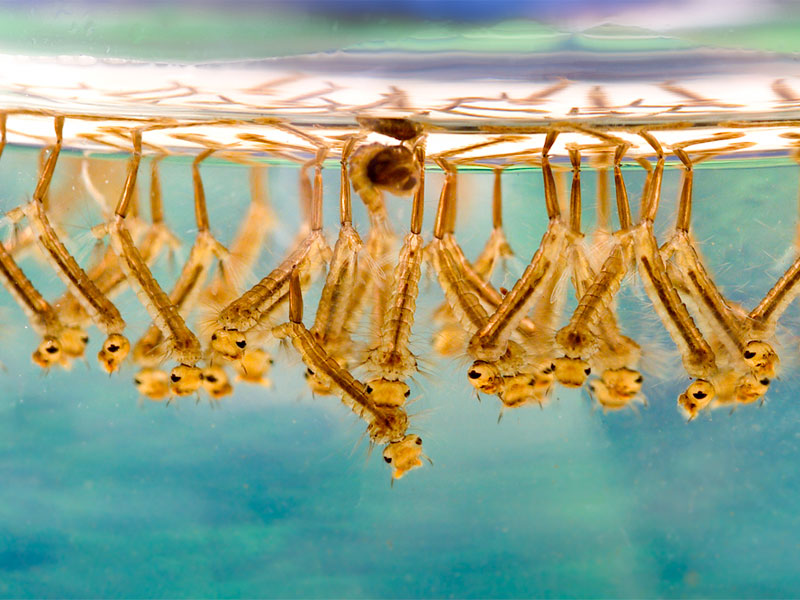Mosquitoes and biting midges infestation

Mosquitoes and some species of midges are blood-sucking insects that need a blood meal from warm-blooded animals and humans to reproduce. Mosquitoes and biting midges are common pests in urban areas and may cause a lot of stress and nuisance whenever they bite. Moreover, in some cases different species of mosquitoes and some of the midge species may transmit serious diseases that pose a risk to the human and animal health such as malaria, yellow fever, blue tongue, African horse sickness (affecting livestock), filariasis (parasitic disease), dengue fever (viral infection) and others. The Asian tiger mosquito is known to transmit the Zika virus through biting. During a pregnancy, this virus infection can cause the infant to be born with microcephaly and other congenital malformations, also known as Zika syndrome.
Mosquito infestations may become a threat to people in urban environment, which should not be underestimated. In fact, mosquitoes reproduce with such high rates (eggs develop to adults in under 10 days) that if an infestation has already been established for some time, then most probably a professional mosquito treatment and control will be needed to get rid of the problem permanently. If you have seen occasionally a mosquito or a midge flying around, there may not be a reason for your concern, but if they keep on coming back and increase in numbers, that may be a clear sign of a present infestation.
Unlike midges, which prefer dry places, mosquitoes usually inhabit areas close to still water sources, where their larvae feed. In such areas these pests grow fast in numbers and may form swarms. Sometimes they travel as far as 1 mile to find a blood meal and then fly back to the source of water, where they reside and breed. Whenever mosquitoes and midges settle in urban areas, this is usually around channels, ponds and water containers.
Mosquitoes control

Effective mosquitoes and midges pest control requires profound knowledge of the related pest and implementing the best practices for extermination and control. Our British Pest Control Association (BPCA) trained mosquito specialists have been tackling all kinds of infestations across East, West, South, North London and the surroundings for many years now. We can guarantee that the safest and most efficient methods for eradication will be used, integrated in a pest control programme, which will be developed to suit any requirements and legislation.
At Prime Pest Control we offer individually-tailored and targeted mosquito treatments implementing only the most efficient chemical and non-chemical methods for control and removal, which are also cost-efficient and human-friendly. Pretty much, the same methods and techniques apply to the treatment of midge infestations as the ones used for mosquito control.
About mosquitoes

Mosquitoes are ancient flying insects that feed on mammals by sucking their blood. This pest is not just annoying because of its bites, but also it can transmit harmful diseases that may endanger livestock and sometimes humans. Mosquitoes are notorious for their bites and for some people with allergic reaction mosquito infestations may turn into a complete nightmare. In London and the UK there are recent indications of potentially dangerous mosquito species, particularly in Kent. Those species of mosquitoes are called Asian tiger mosquitoes and are known to have migrated from continental Europe to the UK. Measures are taken and monitoring is carried out in several areas in Kent and Folkestone. It is recommended that households in the affected areas should generally try to deny the mosquitoes access to any possible water source at their property, proof windows with screens and look out for the mosquitoes.
This nasty blood-sucking pest can rapidly reproduce. A female mosquito is capable of producing between 100 and 200 eggs during their life span. The eggs will hatch within one week time and then turn into larvae for another 4-5 days. The last stage before the adult mosquito is the pupae stage, which will take not more than 3 days to develop into a fully-grown mosquito. Mosquito larvae and pupae are developing under the surface of still water sources, such as lakes and ponds, canals and rivers, even artificial ponds and sources of water in your garden, for example. Those two life stages need water to evolve.
The life span of female mosquitoes can go up to 100 days and the males may survive up to 20 days in ideal conditions. Another interesting and scientifically proven fact is that the most attractive people to mosquito bites are the ones with higher levels of steroids or cholesterol on the surface of their skin. A mosquito can smell its prey from a distance of up to 50 meters. Both female and male mosquitoes feed on sugars, but only the female mosquito bites and sucks blood, because it needs a blood meal to develop fertile eggs. The majority of the midges family does not feed on blood either, instead they feed on nectar and other insects’ bodily fluids.
